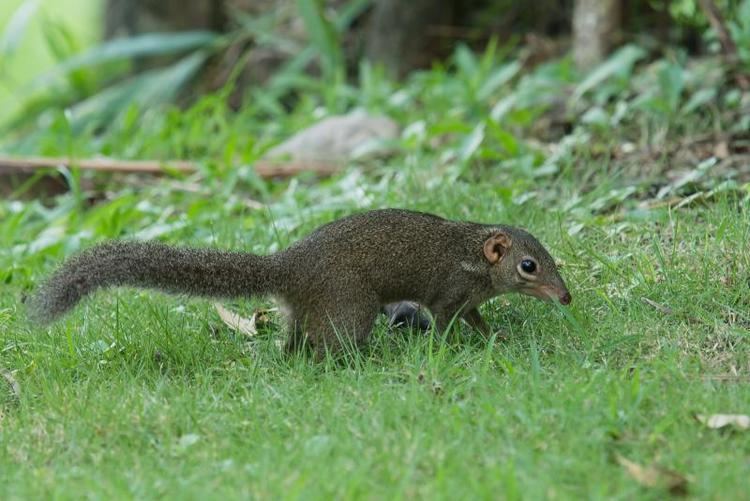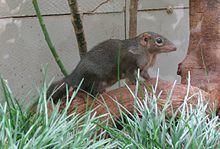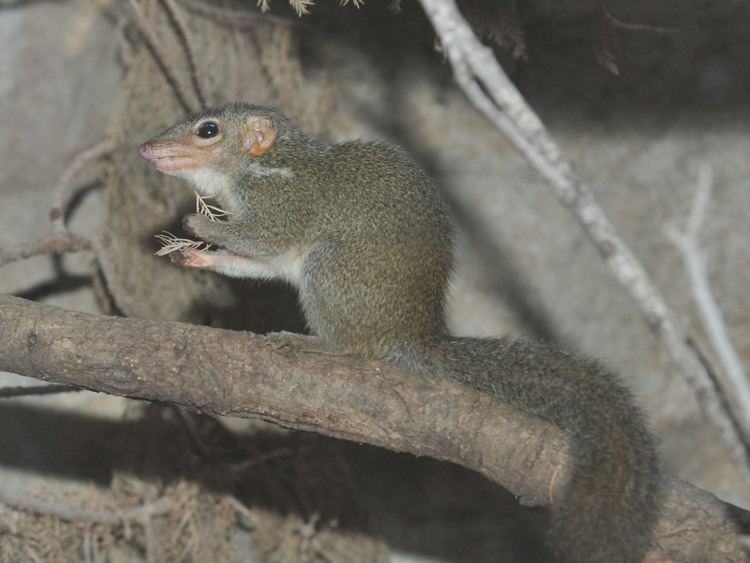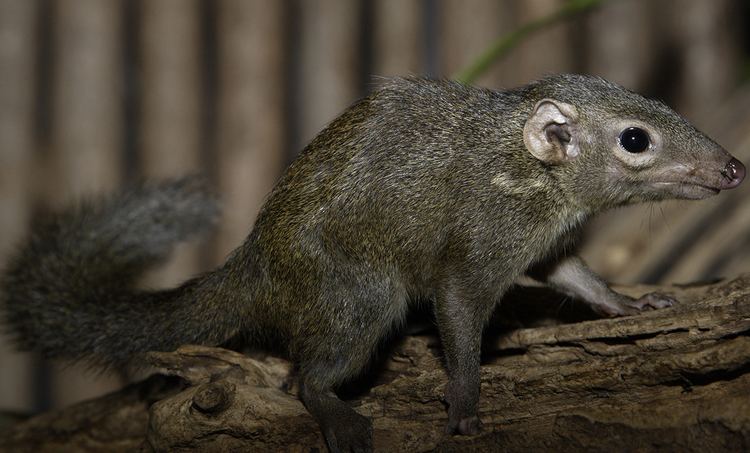Order Scandentia Genus Tupaia Higher classification Tupaia | Phylum Chordata Scientific name Tupaia belangeri Rank Species | |
 | ||
Similar Tupaia, Treeshrew, Mammal, Tupaiidae, Common treeshrew | ||
Northern treeshrew
The northern treeshrew (Tupaia belangeri) is a treeshrew species native to Southeast Asia.
Contents
- Northern treeshrew
- Northern treeshrew tupaia belangeri cambodia 20160306 173341 m2ts
- Characteristics
- In medical research
- References
In 1841, the German zoologist Johann Andreas Wagner first used the specific name Cladobates belangeri for treeshrews that had been collected in Pegu during a French expedition to Southeast Asia. These specimens were described by Isidore Geoffroy Saint-Hilaire in 1834 in whose opinion they did not differ sufficiently from Tupaia tana to assign a specific rank.

Northern treeshrew tupaia belangeri cambodia 20160306 173341 m2ts
Characteristics

Results of a telemetry study involving northern treeshrews showed that their body temperature varies from 35 °C (95 °F) during the night to 40 °C (104 °F) during the day. This difference is larger than in other endotherms, and indicates that the circadian rhythms of body temperature and locomotor activity are synchronized.

Complete mitochondrial genome data support the hypothesis of a closer phylogenetic relationship of Tupaia to rabbits than to primates. The northern treeshrew was one of 16 mammals whose genomes were sequenced by staff of the Broad Institute, which released a low-coverage assembly of the genome in June 2006. The genome will be useful in comparisons with the other genomes to identify gene function.
Adult weight: 0.2 kg (0.44 lbs) Maximum longevity: 11 years
In medical research

Tupaia belangeri has attained growing interest for use as a medical model. In 2002, an article was published describing that the primary hepatocytes of T. belangeri could be used as a model for studying the Hepatitis C virus, which is a major cause of chronic hepatitis worldwide. Other scientists used Tupaia belangeri to study the development of photo reception, investigation of retinal cones, and refractive state and ocular component dimensions of the eye. Many studies have been done regarding eye structure, development, and vision using the Tupaia belangeri model because of the similarity to human eye structure and sight that is uncharacteristic of conventional small lab animals, such as rodents.
